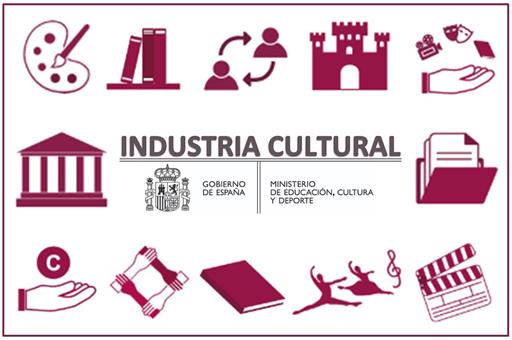Yearbook of Cultural Statistics
Spanish culture industry surpasses 690,000 jobs in 2018
News - 2019.11.27
This figure shows that cultural employment continues to grow, with increases in each of the last five years to now stand at a level similar to the years prior to the economic crisis.
These jobs are mostly held by men, 60.9% or 420,100, compared with 39.1% or 270,000 held by women. By age group, slightly more jobs are held by people of younger ages. Furthermore, it is also characterised by higher-than-average academic training, with higher education rates above those seen in the national total (69.3% compared with 42.9%).
69.9% of cultural jobs are held by salaried employee, a lower figure than that seen among the total working population of Spain (84%).
The autonomous regions with the highest population engaged in cultural activities are Madrid (5.4%) and Catalonia (4.4%).
Growing number of cultural companies
The number of companies whose main activity focuses on culture in 2018 stood at 3.6%, a total of 122,673 companies. This figure accounts for 3.7% of all the companies recorded in the Central Directory of Companies of the Spanish National Statistics Institute. Most of them, 82.2% or 100,874, engage in activities within the industry or services, such as publishing, libraries, archives, museums, films, videos, radio and television, and arts and performance, among others, while the remaining 17.8% (21,799) engage in activities linked to trade or the lease of cultural assets.
It should be noted that 64.7% are companies with no salaried employee, 28.7% are small businesses with 1 to 5 employees, 6% have 6 to 49 employees and the remaining 0.6% are large businesses with at least 50 employees.
They are mostly based in the autonomous regions of Andalusia (13.2%), Catalonia (20.1%), the Region of Valencia (9.6%) and the Region of Madrid (22%).
Household culture consumption falls 4.4%
Household spending on cultural goods and services in 2018 amounted to 12.71 billion euros, accounting for 2.3% of total estimated spending on goods and services. This figure represents a year-on-year decrease of 4.4%.
The average spend per household on culture stood at 682.50 euros last year, and the average spend per person stood at 274.60 euros per year (4.8% less than in the previous year). This culture spending was mainly on: books (14.7%), attending shows (cinema, theatre and others) (12.8%) and mobile and Internet-related services (22.5%).
The highest average spend per person was in municipalities of over 100,000 inhabitants. It was higher-than-average in the autonomous regions of the Balearic Islands (280.70 euros), Castile-Leon (314.30 euros), the Region of Valencia (286.30 euros), the Region of Madrid (347.20 euros), the Region of Murcia (312.70 euros) and La Rioja (275.50 euros). The Provincial Region of Navarre (348.70 euros) is where the most is spent per person on culture.
Culture tourism
Culture remains an outstanding feature of tourism in Spain. The statistics show that 14.5% of all trips made in 2018 for leisure, recreation or holiday reasons by residents of Spain were mainly begun for cultural reasons. The 12.6 million inbound tourists who mainly travelled for cultural reasons in 2018 can be added to this total, a figure that represents 17.5% of all trips made for leisure, recreation or holiday purposes by inbound tourists.
Indicators are also included on the total spending associated with trips mainly made for cultural reasons, amounting to 7.73 billion euros in 2018 for residents of Spain and 13.34 billion euros for inbound tourists. Cultural activities were enjoyed on one in four trips made by residents (24.2%), a figure that rises to 37.2% among inbound tourists.
Financial contribution from culture
The Yearbook of Statistics contains the results of the Satellite Analysis of Culture in Spain, which shows that the 2017 contribution from the culture sector to Spanish GDP stood at 3.2%, when considering all the economic activities tied to intellectual property.
Compared with this contribution, net public funding from the General State Administration Services stood at 678 million euros (2.6% more than in 2016), from the regional governments at 1.14 billion euros (up 8.5%) and from local authorities at 3.27 billion euros (up 6.1%). All three areas of public administration therefore increased their funding in 2017. It should be noted that, in terms of GDP, these figures represent 0.06%, 0.1% and 0.28%, respectively.
The number of visitors to museums has risen by 9.2% in the last two years.
The Yearbook of Cultural Statistics includes the biennial statistics on Museums and Museum Collections drawn up by the Ministry of Culture and Sport in partnership with the Ministry of Defence, National Heritage and the Autonomous Regions and Cities.
Following analysis of the data from 1,481 museum institutions, it is concluded that they received 65.4 million visitors in 2018, a figure that represents an increase of 9.2% on 2016.
The highest average number of visits per open museum (45,929) was recorded in the category of Contemporary and Fine Arts.
Non official translation





